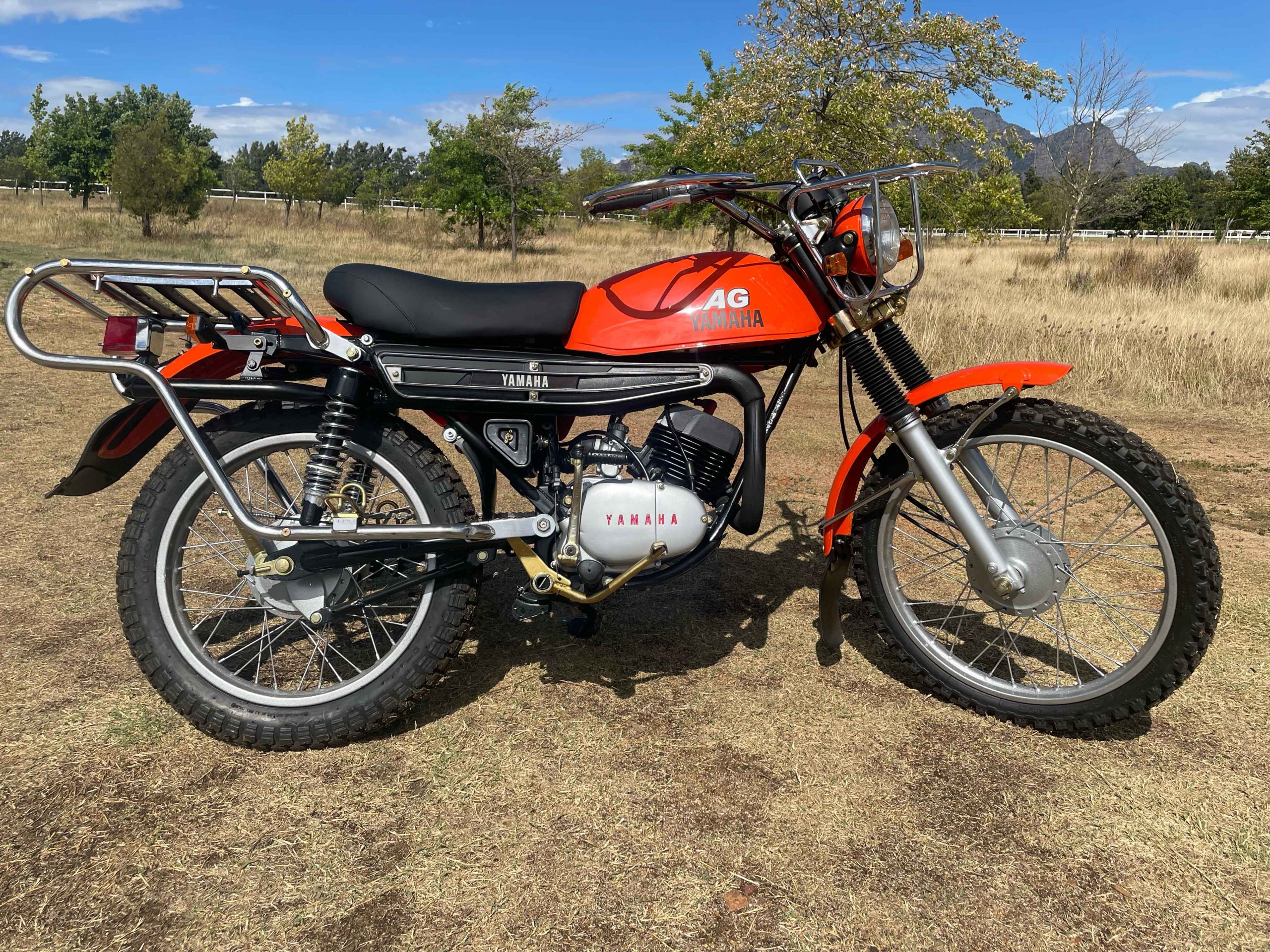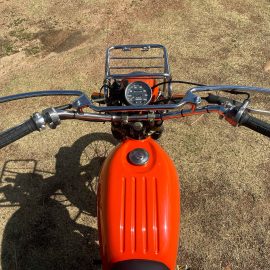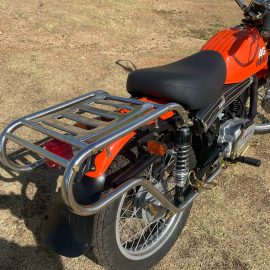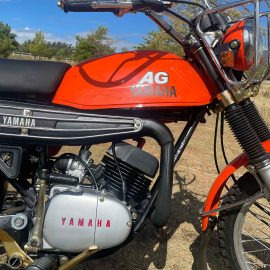
13 Dec On Yer Bike: 1978 Yamaha AG175
This month FMM Curator Wayne Harley describes a bike with a mission in life…
The motorcycle has been around for more than a century, and over the years I have featured so many different types – and from the majority of manufacturers. Most of the time we see the motorcycle in the role of a good and affordable way of commuting, or maybe just enjoying a road trip on a Sunday morning breakfast run. However, the motorcycle has also played a very important commercial role in society, as I’m sure everyone will have noticed the massive increase of small-capacity machines running around delivering online orders.
Some 40 years ago it might only have been the butcher or the chemist having an order or prescription dropped off, whereas today these little bikes are everywhere delivering anything from a new cellphone to a Chinese takeaway. But there are other places in society where the motorcycle is often overlooked, and this is in humanitarian aid and agricultural sectors, as there is still an overwhelming need for access to remote areas of the world, including Africa, Asia and, South America. Sadly, the quad bike has started taking the place of the trusted small-capacity motorcycle, but until a few years ago these two-stroke runabouts (and, later, four-stroke agriculture/trail motorcycles) offered the perfect solution to traversing any remote track or path, be it for accessing a remote African village, working with livestock, checking remote pumps or fences and suchlike.
These motorcycles were cheap, tough and simple to maintain, a purpose-built machine with a specific and clever goal in mind. They had to combine the ruggedness of a foot-up trail bike, have the flexibility of city delivery motorcycle or scooter, be not too difficult to ride plus have a good load carrying capacity. They were usually light, easy to manoeuvre, economical to run and very simple to repair.
And so to this month’s featured bike, a lovingly restored 1978 Yamaha AG175 that came from a game farm in the mountains of Graaff Reinet, where it had been part of the owner’s collection of vehicles for many years. The AG175 forms part of a line of trail/agricultural-inspired motorcycles to make their way to South Africa from Japan in the early 1980s. The AG175 followed the AG100 that was introduced in 1973, and both were based on the 1969 Yamaha CT range of on-/off-road style motorcycles. The 175cc model made its appearance in 1976 and remained in production until the mid- 1990s before being replaced by the current Yamaha AG range of 125cc and 200cc motorcycles, which are now more environmentally friendly with low-emission 4-stroke engines and are a lot more user friendly.
The AG175 has a basic, single-cylinder 2-stroke engine making 11,5 hp (8,6 kW) @ 6 500rpm and 12.8 N.m of torque, enough oomph to comfortably get you and a load up 30-deg inclines, and in 5th (top) gear on the open road, it could reach a speed of 90 km/h. The reed valve engine has an automated lubrication system to simplify any 2-stroke oiling issues. The AG has a double-cradle tubular steel frame as used on the CT1 and CT2 Yamaha trail bikes. Front suspension is by telescopic forks similar to the CT, with a 21-inch front wheel and cable-operated drum brake. The rear suspension features simple, dual, manually-adjustable shocks along with a steel tubular swing arm and an 18-inch wheel with a cable-operated drum brake.
The single seat is broad and very comfortable, and is well placed ergonomically considering the bike’s vintage – clearly, there was consideration made for a long day in the saddle! The extras are all based on getting a job done i.e. the loading of equipment or even animals … yes, livestock and pets! The 1977 sales brochure states, “The extra-large carrier is strong enough to carry tools and equipment – even a large sheep-dog”. Standard on all AG models were the unmistakable sable grip protectors for riding and navigating through gates, rocky ravines or wooded areas etc. The front carrier was originally intended to carry smaller items such as books, maps and charts. But even with all these extra carriers and guards, the total dry weight of the motorcycle is only 108 kg, a manageable weight to pick up should the motorcycle fall.
They may not be the fast shiny racers, choppers or cruisers that bikers will drool over, or the powerful legends that win the Dakar Rally, but these tiny workhorses that make deliveries day and night, travel tens of thousands of kilometres on the roughest roads on the planet are truly the heroes of the motorcycle industry.
As a tailpiece, while researching this month’s featured bike, I came across the United Nations Children’s Fund (UNICEF) supply catalogue – hhttps://supply.unicef.org/s0004120.html – and the organisation still offers the Yamaha AG !






